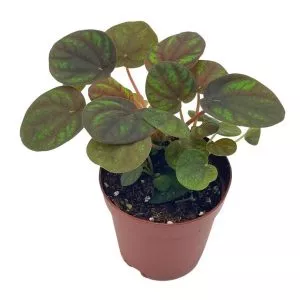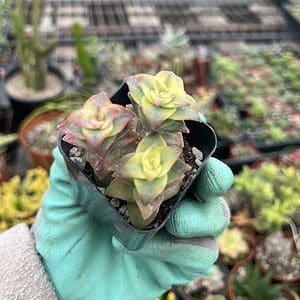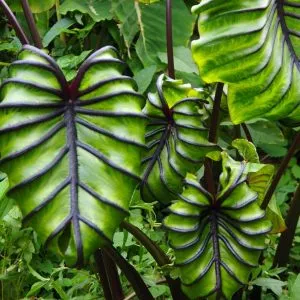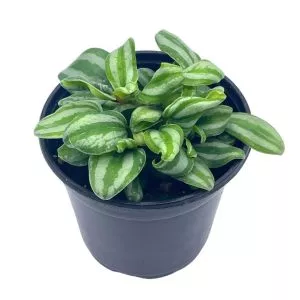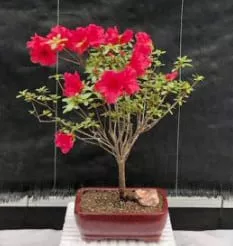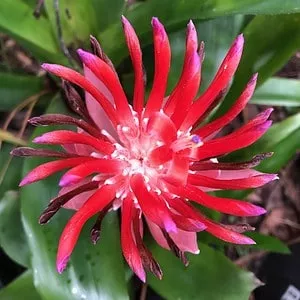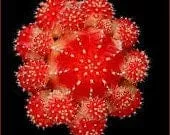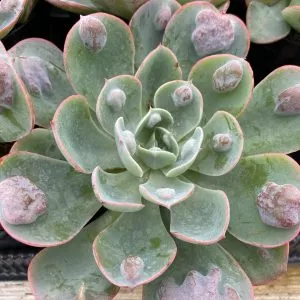No products in the cart.
Table of Contents
You can’t go wrong with these tropical plants in the garden or at home. But, the best part with a Heliconia (Lobster Claw) is that you can add an exotic flair when it flowers.
The most exciting part of these exotic plants is the tropical flowers adding a splash of color.
Heliconia Species
The fantastic thing about the Heliconia plant species is that you can grow them as potted plants if not possible to grow them in your garden.
One thing is sure it makes for an exciting addition to your living space. Also, you can find over 200 flowering perennial species in Heliconia, each with its exotic flowers.
Many gardeners refer to these plants as the lobster claw or birds of paradise. Still, the foliage looks like thick banana leaves while the stem is colorful yet looks like waxy flower bracts.
You see colorful blooms emerging on the bracts, but the bracts are spectacular compared to the flowers. You find many Heliconia species throughout South America and other central parts of the country.
Still, you find the lobster claw flower ranging in a palette from red, pink, yellow, orange, or green (varies by species).
The Heliconia genus is not a popular houseplant as it can grow huge. So, best choose the right location if grown as a potted plant.
Heliconia Potted Plants Care
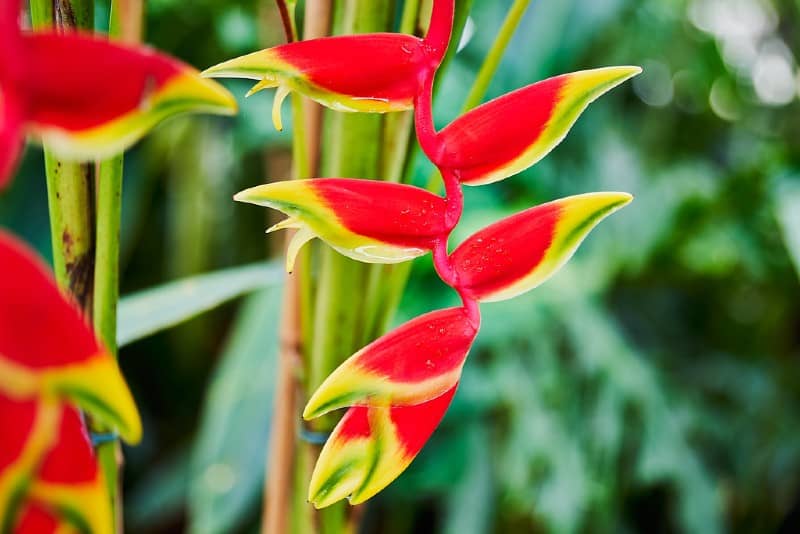
The tropical Heliconia needs a consistent temperature, and some of them can tolerate cooler weather but prefer a tropical setting to thrive as indoor plants or grow outside.
Here is a summary of taking care of many cultivars in the genus. But also remember to look at the detailed care following the tabular.
![]()
Recommended Potting Mix for Lobster Claws
While these plants you find growing outdoors in southern Florida, you can grow them inside. Still, it helps to keep the ground light, rich, and airy.
Growing Heliconia is easy when you provide them with organic matter and well-drained soil. Then, you can add a combination of garden loam, leaf compost, and sand.
Or you can provide your false bird with peat moss with wood-based compost that is a well-draining soil. Doing this prevents the roots from rotting and helps to keep those unusual flowers happy.
Lighting Needs to Create a Native Habitat

Like the parakeet and banana plants, the false bird of paradise needs the same lighting conditions.
While full sunlight helps in the northern regions, it does not benefit when you grow them as a houseplant.
Still, we recommend placing them at a sunny window with filtered light. As an indoor plant, it needs bright indirect light, and you may find you need to add artificial light on shorter days.
So if you want your plants to flower, they need at least six hours of direct sunlight.
In stock In stock In stock In stock
$9.99
Sold By:
Cacti and Exotica
Cactiandexotica | Sempervivum Calcareum Greenii | 4″ Pot
Rated 4.98 out of 5 based on 59 customer ratings00
Sold By:
Cacti and Exotica
$6.99
Sold By:
BubbleBlooms
Red and Green Ripple Peperomia Frost, 2 inch, (brownish) Emerald Ripple Pepper, caperata, albovittata
Only 99 available and it’s in 3 people’s basket Rated 4.81 out of 5 based on 279 customer ratings00
Sold By:
BubbleBlooms
$4.59
Sold By:
Cacti and Exotica
Crassula | Perforata Variegata | 2″ Pot
Rated 4.98 out of 5 based on 59 customer ratings00
Sold By:
Cacti and Exotica
$55.95
Sold By:
SunSoul Plants
$95.00Colocasia ‘Pharaoh’s Mask’ in 4″ pot
Only 2 available and it’s in 1 people’s basket Rated 4.87 out of 5 based on 98 customer ratings03
Sold By:
SunSoul Plants
Watering Your New Heliconia
Now, these lobster claw plant Florida species love constant watering for new growth. But make sure it has the proper drainage.
Please keep checking the soil to prevent it from drying out in warmer summer months as your plant can experience leaf-browning along the edge.
When winter arrives, give your large plant tepid water and ensure the soil dries fully between watering. Your wild plantain will need more watering daily in summer.
The best is to water around the ground level as wetting the leaves can result in fungal spores.
Temperature & Humidity For Heliconia Plant
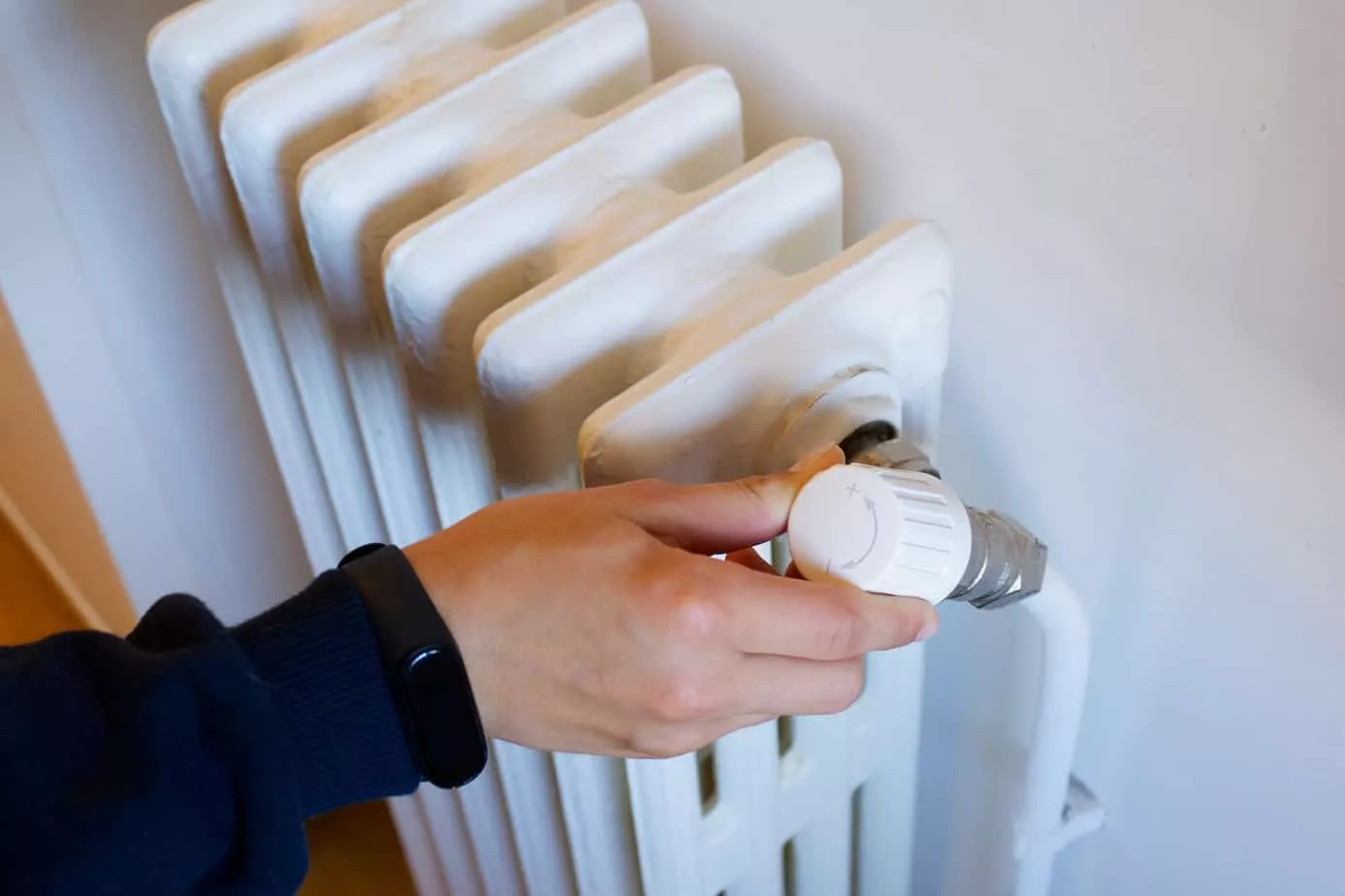
Heliconia plants grow well in tropical regions and prefer humid to warm conditions. Thus, keeping temperatures in the home at 70°F and above is ideal for this indoor plant.
Still, as an outdoor plant, it can tolerate frost. But generally speaking, we recommend protecting them in temperatures below 50°F.
When temperatures reach below the latter, it sends the plant into a dormant state. When the air is dry, you will need to give the leaves a misting to prevent the foliage from drying out as an indoor plant.
Feeding Your Plants
The lobster claw loves feeds, especially an organic liquid fertilizer. The truth is that when the Heliconia has new flowers, it eats up a great deal of feeding. One of the best feeds is a bone meal, or you can use a slow-release one with an NPK ratio of 2-1-2.
Propagation of Heliconia
You can propagate your Heliconia with seed, but it is a long process. The best is using rhizome division which is simple to plant.
Get a potting medium ready with sterilized potting compost, and perlite, or use vermiculite instead. Leave your freshly harvested rhizome for a few days to dry to prevent fungus from entering through the wounds.
You can also use a bit of pruning sealer if you have one. Plant the segment with the bud or eye barely exposed. Firm out the earth around your plant and add more if you like.
Planting From Seeds
Using seed takes a long time and can range from a month to a year.
- Take some sandpaper and scarify the seed and leave it to soak in water for two days.
- Prepare damp compost and sow the seed in it.
- Provide the seed with a lot of sunlight, or you can use a grow light.
You can keep your seedlings as potted plants for up to three months. But keep them protected from wind and cold.
In stock In stock Only 1 left in stock In stock
$10.99
Sold By:
BubbleBlooms
$12.99Begonia Rex, Fireworks, 4 inch pot, Unique Homegrown Exclusive
Only 47 available and it’s in 1 people’s basket Rated 4.81 out of 5 based on 279 customer ratings00
Sold By:
BubbleBlooms
$14.99
Sold By:
BubbleBlooms
Peperomia Mini Watermelon, 4 inch verschaffeltii, Steve’s Leaves
Rated 4.81 out of 5 based on 279 customer ratings00
Sold By:
BubbleBlooms
Free Shipping
$126.13
Sold By:
BONSAI WORLD LLC
Flowering Tropical Red Azalea Bonsai Tree (rhododendron ‘red vi
Sold By:
BONSAI WORLD LLC
Free Shipping
$15.95
Sold By:
SunSoul Plants
$19.95Flaming Torch Bromeliad Plant in 3″ pot, free shipping
Only 2 available and it’s in 2 people’s basket Rated 4.87 out of 5 based on 98 customer ratings00
Sold By:
SunSoul Plants
USDA Hardiness Zones
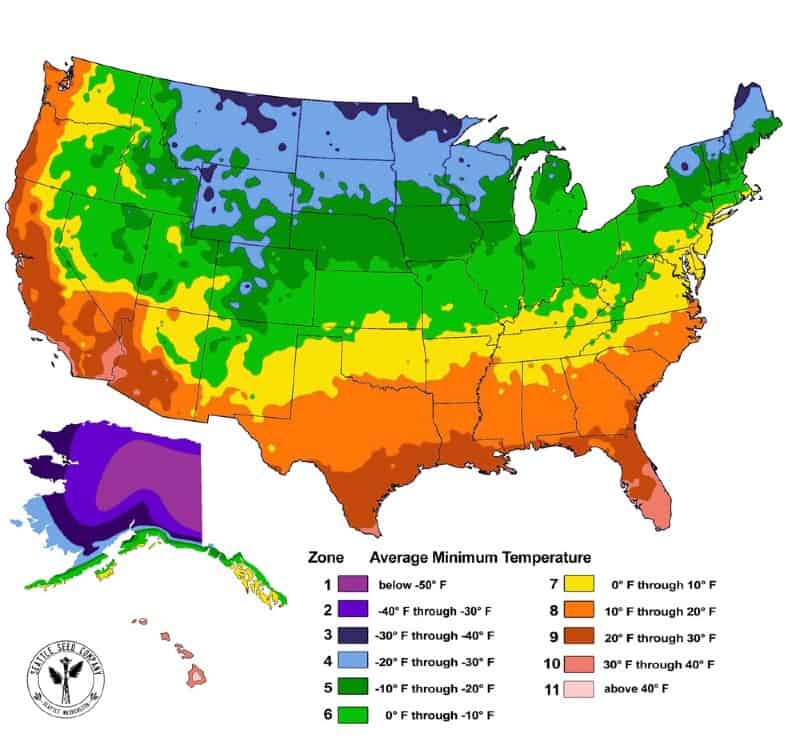
The best place to grow your exotic flower is in the hardiness zones 9 to 11, but it grows better indoors.
Potting and Pruning Heliconia
The best time to grow Heliconia plants is in early spring, during the growing season. The exotic flowers are fast growers and might need repotting often.
Still, they do not mind being pot-bound and might grow better. Yet, these plants form large clumps and need division to manage them with time.
We also recommend using a heavy pot for them compared to your other plants. To help stimulate the growth of new flowers, you can remove the faded flowers or spent blooms.
You can also prune the stems down and remove any dead branches and leaves.
In stock In stock In stock In stock
$9.99
Sold By:
Cacti and Exotica
Cactiandexotica | Sempervivum Calcareum Greenii | 4″ Pot
Rated 4.98 out of 5 based on 59 customer ratings00
Sold By:
Cacti and Exotica
$6.99
Sold By:
BubbleBlooms
Red and Green Ripple Peperomia Frost, 2 inch, (brownish) Emerald Ripple Pepper, caperata, albovittata
Only 99 available and it’s in 3 people’s basket Rated 4.81 out of 5 based on 279 customer ratings00
Sold By:
BubbleBlooms
$4.59
Sold By:
Cacti and Exotica
Crassula | Perforata Variegata | 2″ Pot
Rated 4.98 out of 5 based on 59 customer ratings00
Sold By:
Cacti and Exotica
$55.95
Sold By:
SunSoul Plants
$95.00Colocasia ‘Pharaoh’s Mask’ in 4″ pot
Only 2 available and it’s in 1 people’s basket Rated 4.87 out of 5 based on 98 customer ratings03
Sold By:
SunSoul Plants
Heliconia Varieties
Heliconia psittacorum
![]()
The dwarf Heliconia psittacorum or parakeet flower is a popular indoor plant that grows fast. It is compact foliage that grows to six feet tall.
The blooms are small, and colors vary from multi-colored bracts to orange or red. The true flowers are a shade of yellow with white, red, and orange, and it has dark green tips.
Heliconia angusta
![]()
The red Christmas has a gorgeous color in the holiday season with sexy pink-red bracts with a green/white sepal. Compared to the other house plants, this one thrives in partial shade.
Heliconia rostrata
![]()
The hanging lobster claw is a colorful plant with bright red flowers and yellow bracts. The tropical plant can grow up to 15 feet outdoors but is only five feet tall in containers.
Heliconia Plant Diseases & Pests
If something is bothering your dwarf varieties in the home in Heliconia, then look out for scale insects.
You find them gathering on the underside of the leaves along the middle rib. These pests suck out all the nutrients of your plants.
For preventing spider mites, it helps to raise the humidity around your plant in winter. If you notice infestations, treat them immediately, or they can damage the rest of your houseplants.
Frequently Asked Questions
To keep your plant controlled to prevent spreading, you can divide the rhizomes when they start clumping. You can also cut the roots as well.
You can find in the Heliconias species clumping and spreading plants that multiply fast.
The crane flower is the bird of paradise and part of the Strelitziaceae family from South Africa. It also grows in warm climates as a houseplant, while the false bird of paradise is part of the Heliconia species.
You can find these rare plants online or at a garden center. Still, you need not head out the door as Plantly has them available for you to buy here.
Whether you want to buy, sell or simply reach out to other plant enthusiasts, Plantly is the right place to be!
In stock In stock In stock In stock
$8.99
Sold By:
Succulent Oasis
Cactus Plant -Small Grafted ‘Moon Cactus’ Bright Orange. Adds color to your terrarium or garden.
Rated 4.84 out of 5 based on 352 customer ratings00
Sold By:
Succulent Oasis
Free Shipping
$44.99
Sold By:
Aloha Hawaii Orchids
Live Paphiopedilum Niveum x Sib (hshyng x tan san) Rare Plant 4″
Rated 4.65 out of 5 based on 268 customer ratings00
Sold By:
Aloha Hawaii Orchids
$12.00
Sold By:
Smoot's Farm
Dracaena angolensis aka Sansevieria cylindrica Snake Plant 3″ Pot Live Plant
Rated 4.89 out of 5 based on 27 customer ratings00
Sold By:
Smoot's Farm
$25.99
Sold By:
Succulent Oasis
Medium Succulent Plant – Echeveria ‘Raindrops’. Very Limited Hybrid.
Rated 4.84 out of 5 based on 352 customer ratings02
Sold By:
Succulent Oasis

